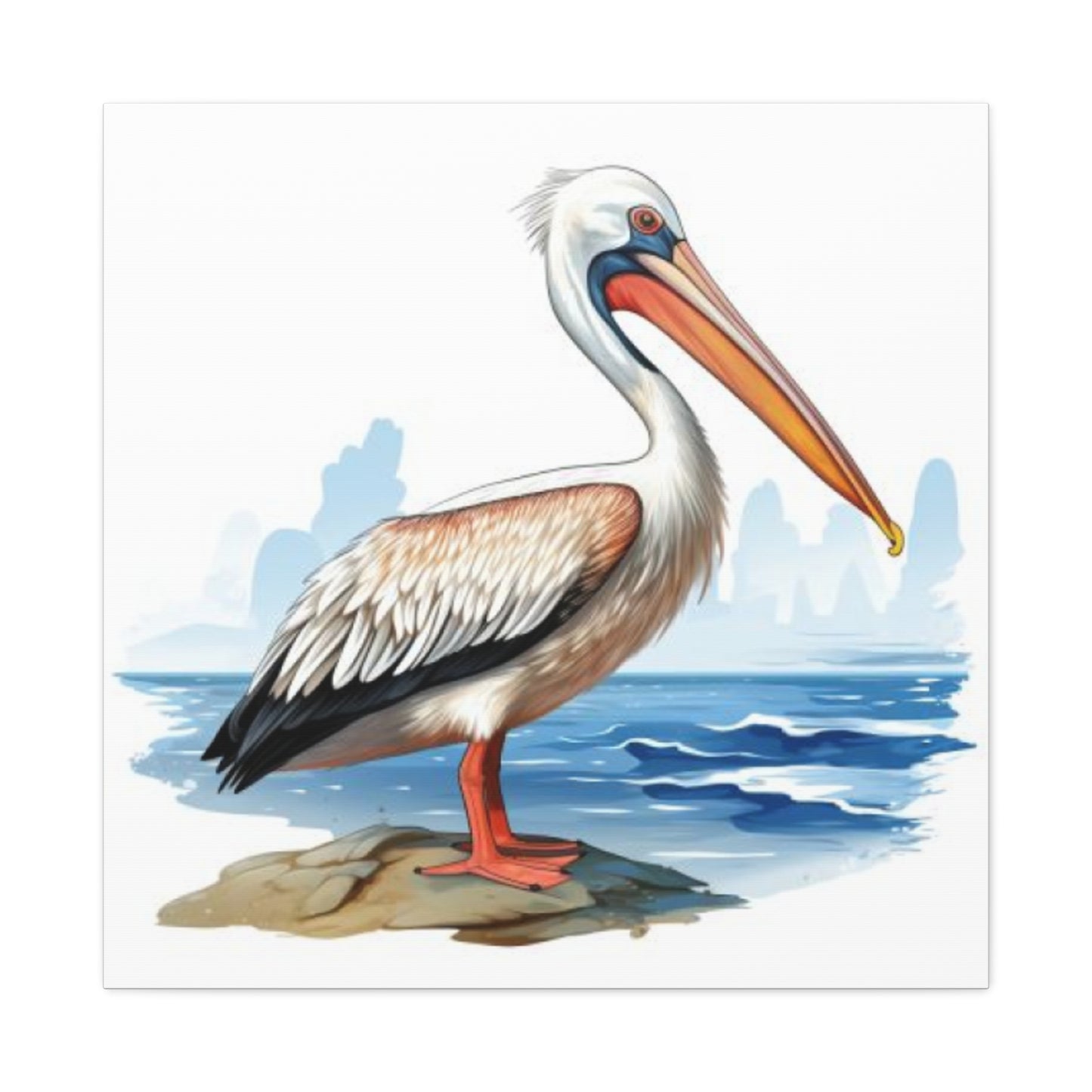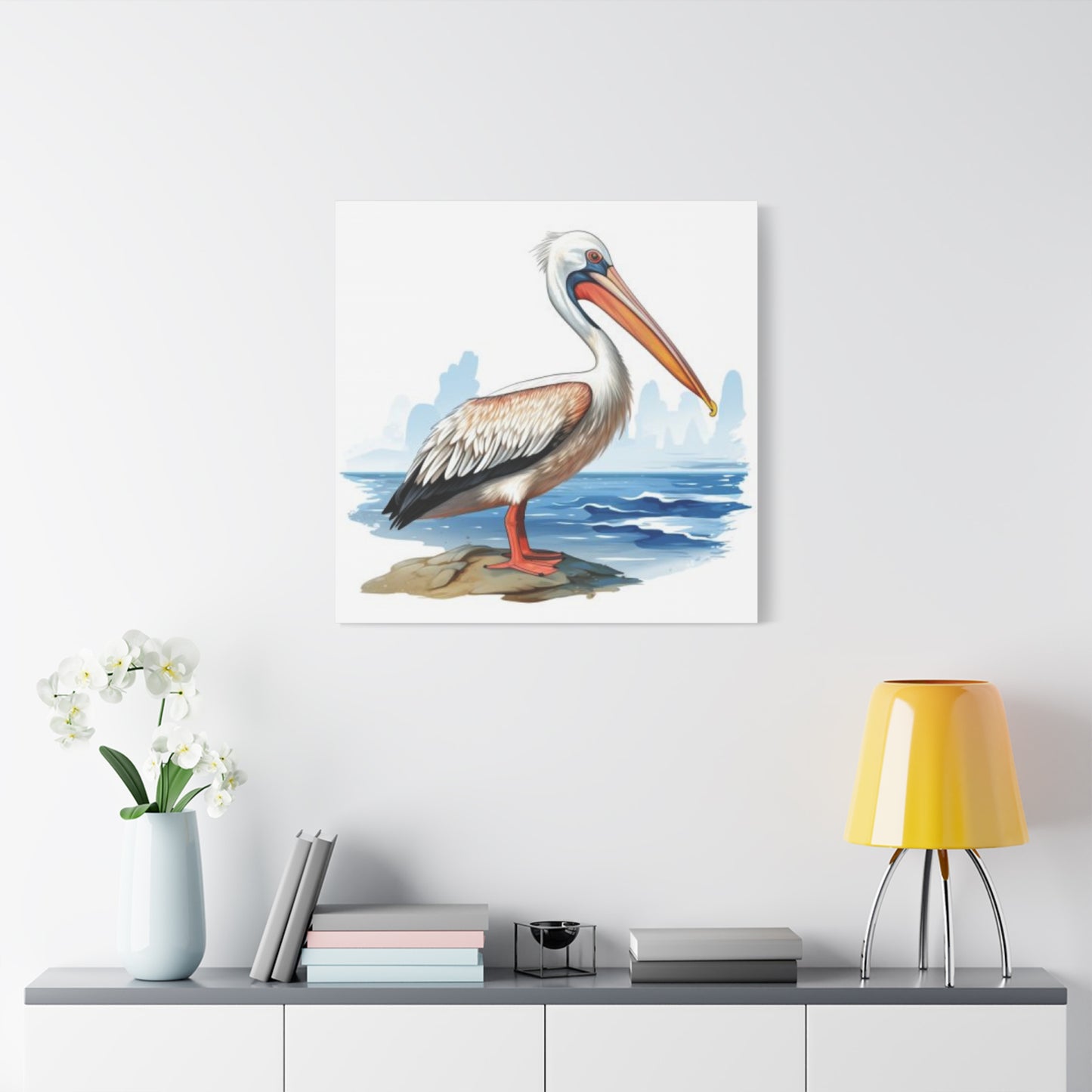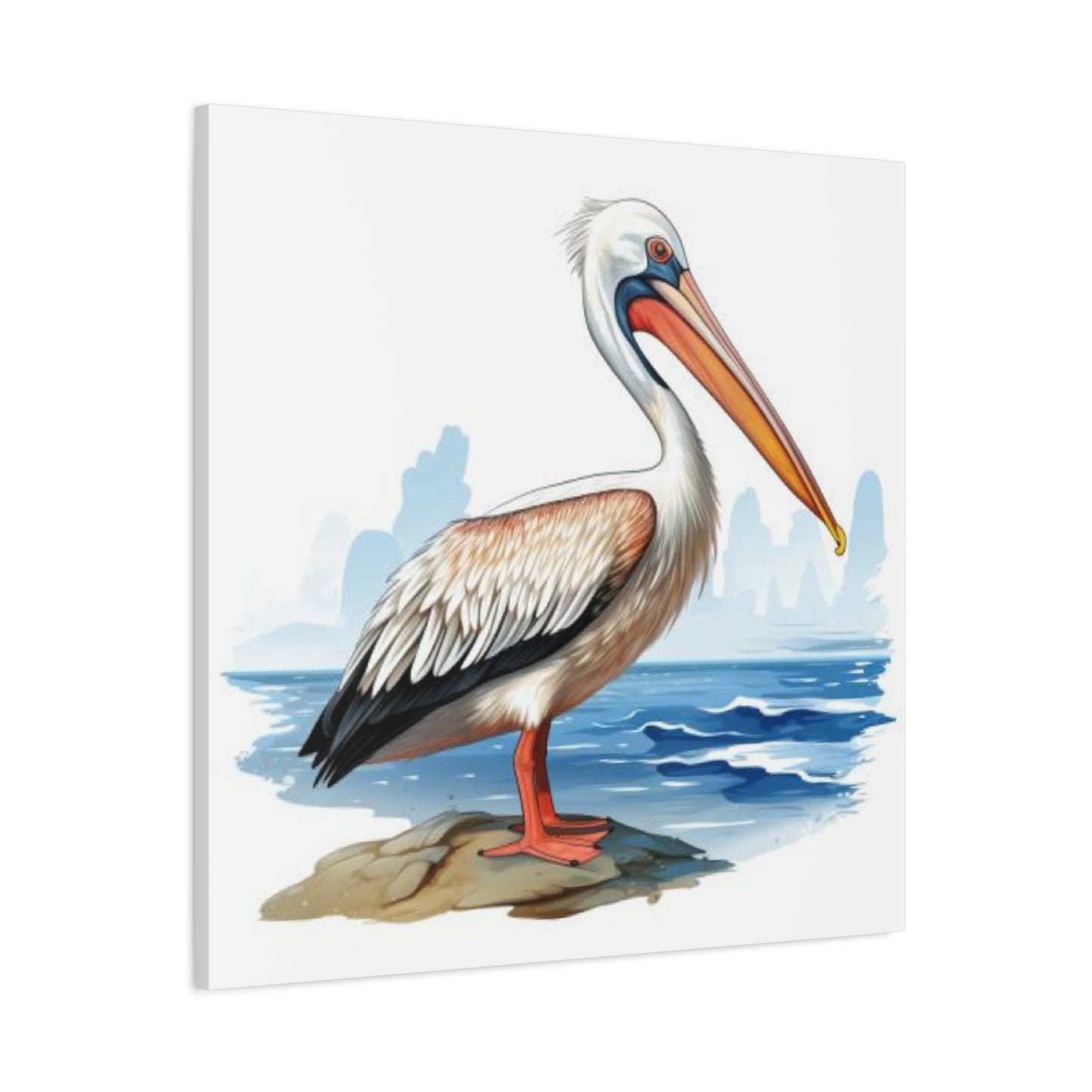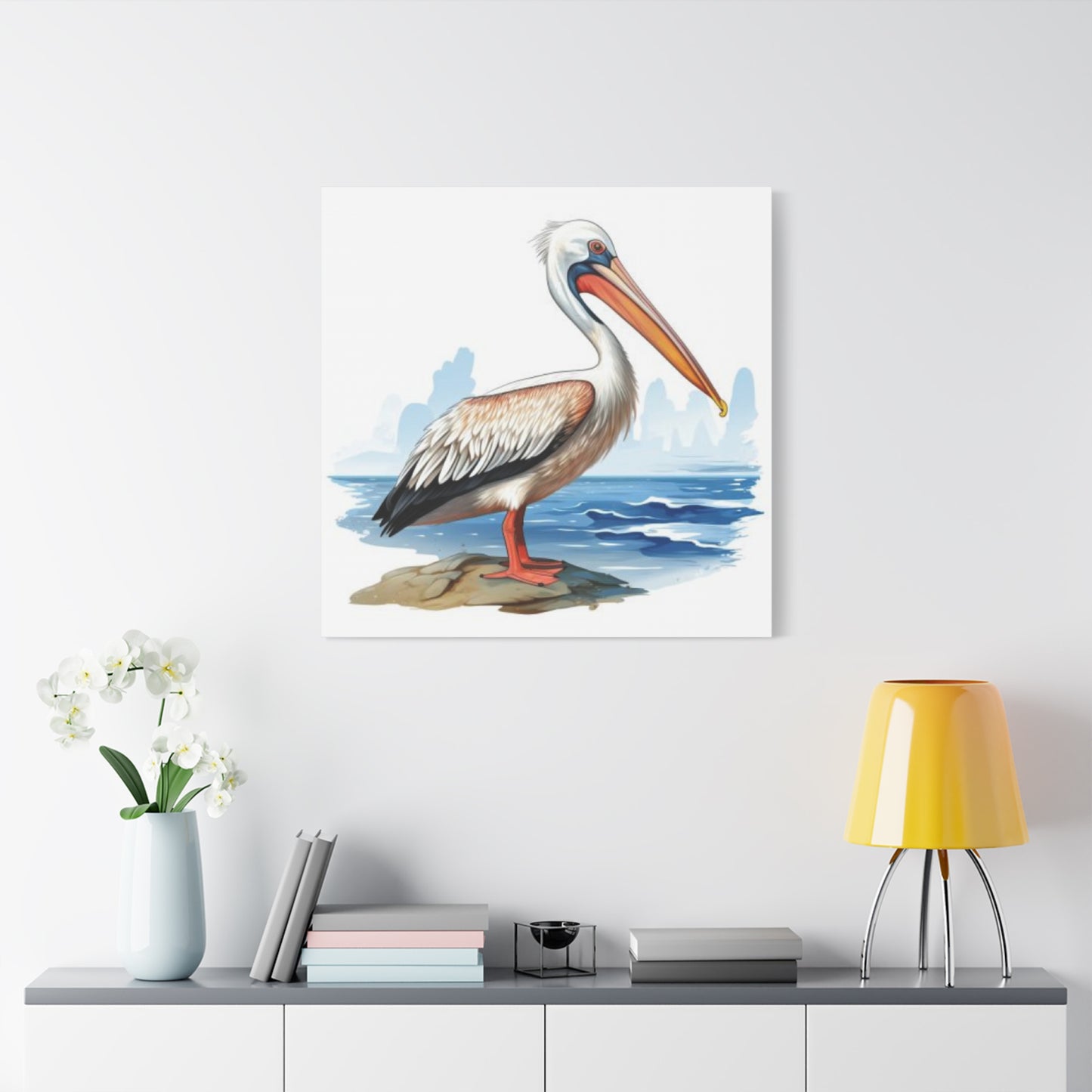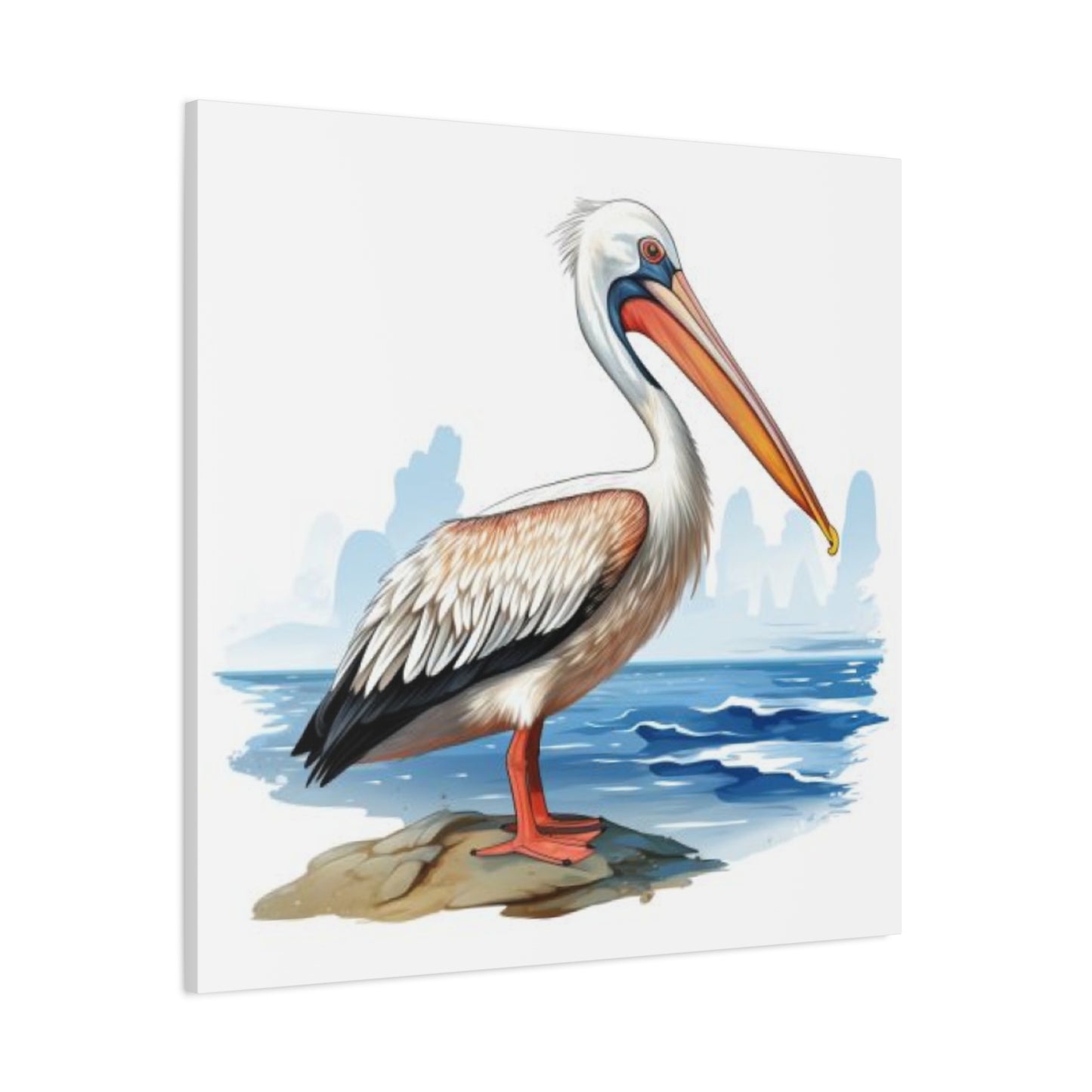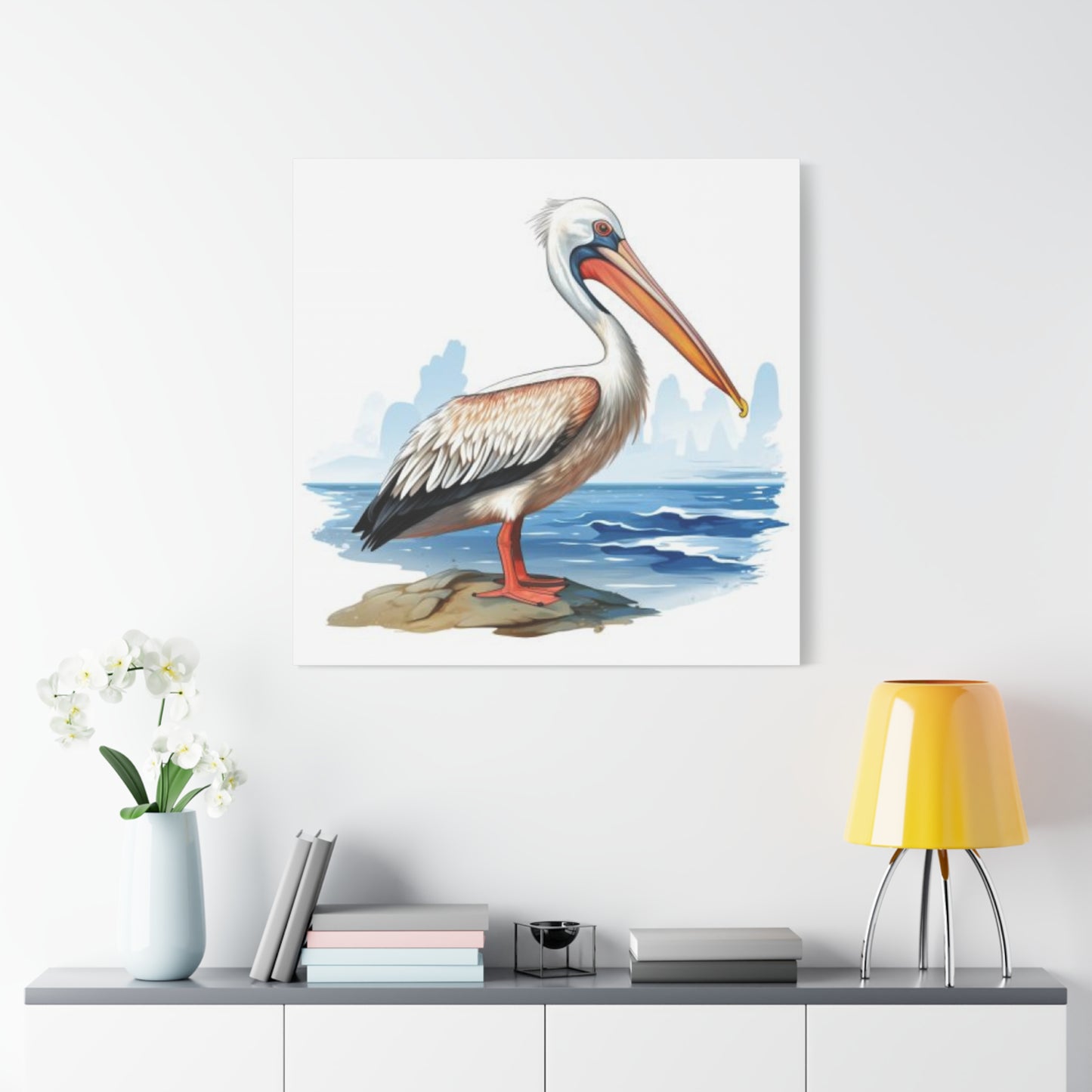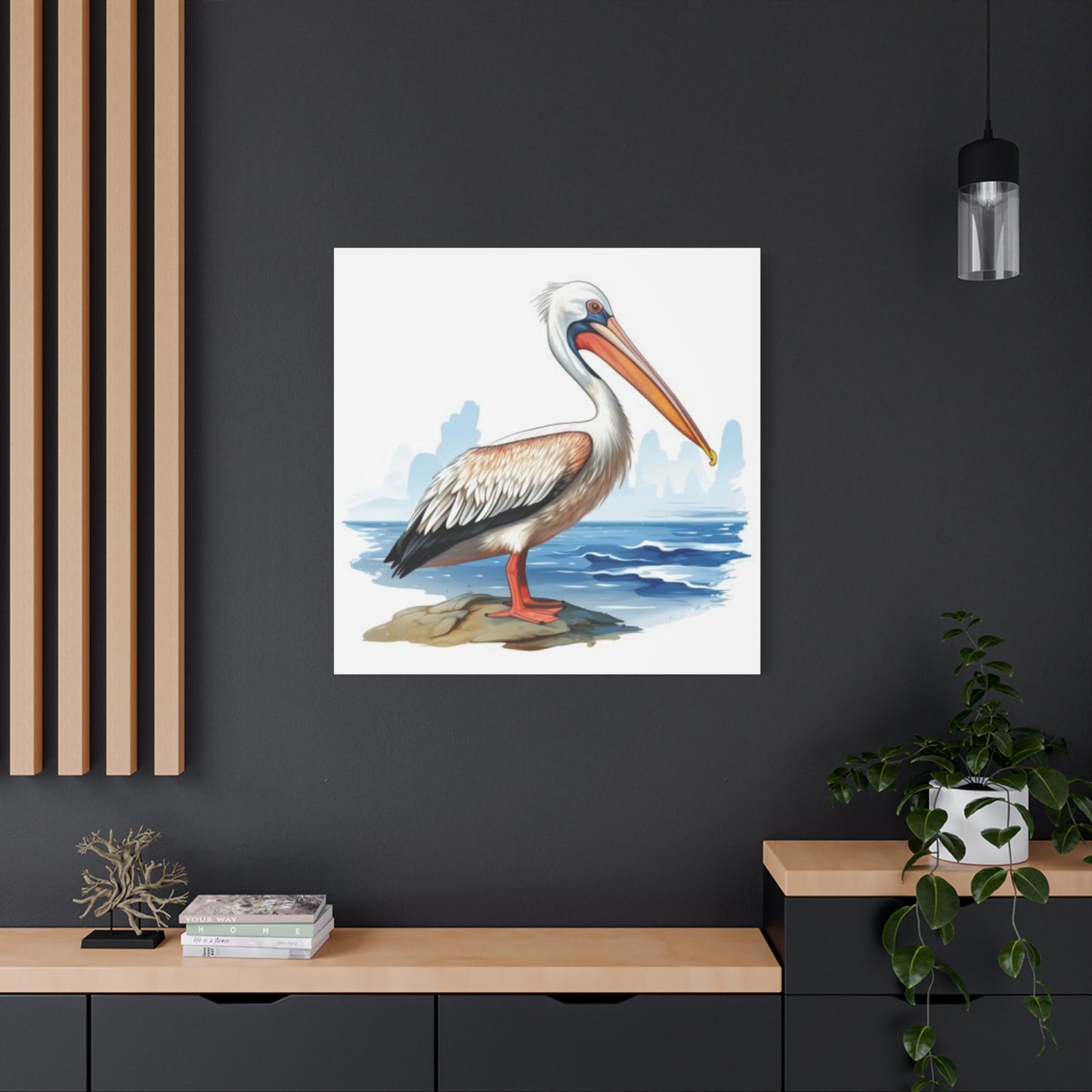Capture the Love: Creative Ways to Showcase Family Poster Wall Art on Canvas
Family photographs hold immeasurable value in our lives, capturing precious moments that define our relationships and personal histories. Converting these treasured memories into canvas wall art creates lasting decorative pieces that bring warmth and personality to any living space. This comprehensive guide explores every aspect of displaying family moments through canvas prints, from selecting the perfect images to creating cohesive gallery walls that tell your unique story.
Canvas prints offer a timeless and elegant way to showcase family photographs, combining artistic appeal with personal significance. Unlike traditional framed photographs, canvas art provides a contemporary aesthetic that seamlessly integrates with various interior design styles. The texture and depth of canvas material add dimensional quality to images, transforming ordinary photographs into gallery-worthy artwork that commands attention and sparks conversation.
The emotional impact of displaying family memories throughout your home cannot be overstated. These visual reminders of love, laughter, and shared experiences create an environment filled with positivity and connection. Every glance at these personalized artworks reinforces family bonds and provides comfort during challenging times. Whether showcasing multi-generational gatherings, intimate parent-child moments, or candid everyday interactions, canvas prints preserve and celebrate the relationships that matter most.
Creating Meaningful Visual Narratives Through Canvas Photography
The art of transforming family photographs into canvas displays goes far beyond simple reproduction. It involves thoughtful curation, strategic placement, and artistic consideration to create displays that resonate emotionally while enhancing your interior aesthetics. Understanding how to select, prepare, and arrange canvas prints ensures your family memories receive the presentation they deserve.
Successful canvas displays begin with photograph selection. The images you choose should represent significant moments, genuine emotions, and authentic interactions rather than stiff, posed portraits. Candid shots often convey more personality and warmth than formal photographs, capturing the essence of family relationships in unguarded moments. Consider photographs that showcase laughter, affection, shared activities, and natural expressions that reveal individual personalities and family dynamics.
Technical quality matters when selecting photographs for canvas conversion. High-resolution images translate better to larger formats, maintaining clarity and detail throughout the printing process. Images with good lighting, proper focus, and balanced composition work best for canvas reproduction. However, modern printing technologies can enhance and optimize many photographs, correcting minor imperfections while preserving the authentic character of the original image.
Color harmony plays a crucial role in creating cohesive canvas displays. Consider the existing color palette in your space when selecting photographs for canvas conversion. Images with complementary color schemes create visual unity across multiple prints, while contrasting colors can add dynamic energy to your display. Black and white conversions offer timeless elegance and can unify photographs taken in different settings or time periods, creating consistency across diverse images.
The emotional narrative communicated through your canvas selection matters tremendously. Thoughtful curation allows you to tell a complete story about your family, highlighting values, traditions, and shared experiences that define your collective identity. Consider including images that represent different life stages, celebrations, everyday moments, and meaningful locations. This comprehensive approach creates a rich visual autobiography that evolves alongside your family.
Designing Intimate Portrait Displays for Personal Spaces
Smaller canvas prints offer unique advantages for creating intimate, personal displays throughout your home. These compact artworks work exceptionally well in spaces where larger pieces might overwhelm, such as hallways, bathrooms, bedrooms, and cozy reading nooks. Understanding how to effectively utilize smaller formats allows you to extend your family narrative into every corner of your living environment.
The versatility of small canvas prints enables creative arrangement possibilities that larger formats cannot achieve. Clustering multiple small canvases creates dynamic gallery walls with visual interest and depth. This approach allows you to combine numerous photographs in limited space, telling more complex stories through multiple images working in concert. The relationship between individual pieces becomes as important as the images themselves, creating conversation and connection among separate moments.
Strategic placement of smaller prints creates focal points in unexpected locations. A carefully chosen canvas above a bedside table provides a comforting presence in private sleeping quarters. Small prints flanking mirrors or doorways add personality to transitional spaces. Groupings arranged on bookshelves or mantels integrate family memories with other decorative elements, creating layered, collected aesthetics that feel organic and intentional.
Proportion remains essential when working with smaller canvas formats. The relationship between canvas size and wall space determines visual impact and balance. Single small prints can appear lost on expansive walls, while oversized canvases overwhelm compact spaces. Understanding these proportional relationships helps you select appropriate sizes for each location, ensuring every print makes its intended impact without dominating or disappearing within its environment.
The intimate nature of smaller prints invites closer viewing and detailed examination. Unlike large statement pieces viewed from across the room, compact canvases reward those who approach for careful observation. This quality makes them ideal for displaying photographs with subtle details, quiet moments, and nuanced expressions that might get lost in larger formats. The personal nature of these intimate displays creates private connections between viewer and image.
Capturing Authentic Emotional Connections in Visual Form
The most powerful family canvas art stems from photographs that authentically capture genuine emotional connections. These images transcend technical perfection, communicating real feelings and relationships through expression, body language, and compositional elements. Understanding what makes photographs emotionally resonant helps you identify the best candidates for canvas conversion among your collection.
Authentic emotion manifests through unguarded moments rather than forced poses. Photographs capturing spontaneous laughter, tender embraces, concentrated focus during shared activities, or quiet contemplation reveal personality and relationship dynamics more effectively than artificial arrangements. These candid moments possess inherent artistic quality precisely because they document real experiences rather than manufactured scenarios.
Parent-child interactions provide particularly rich material for emotional canvas art. Images showing parents reading to children, teaching new skills, offering comfort, or simply sharing space communicate fundamental bonds that resonate universally. The size difference between adult and child bodies, protective gestures, mirrored expressions, and mutual attention all contribute to the emotional power of these photographs.
Sibling relationships offer another dimension of family storytelling through canvas art. Photographs capturing cooperation, playful competition, protective instincts, or simple companionship document bonds that shape individual development and family culture. The evolution of sibling dynamics over time becomes visible when displaying images from different periods, showing relationships maturing while maintaining core connections.
Multi-generational photographs hold special significance, documenting family continuity across time. Images showing grandparents with grandchildren, family gatherings spanning age ranges, or traditional activities passed between generations communicate heritage and belonging. These photographs become increasingly precious over time, preserving relationships and documenting family evolution in ways that purely contemporary images cannot achieve.
Developing Cohesive Design Aesthetics for Family Displays
Creating visually coherent canvas displays requires intentional design choices that unify individual pieces into harmonious collections. Color coordination, style consistency, framing decisions, and spatial arrangement all contribute to the overall aesthetic impact of family canvas art. Mastering these elements ensures your displays enhance interior design while maintaining their emotional significance.
Color palette selection fundamentally shapes the visual coherence of canvas displays. Monochromatic approaches using variations of single hues create sophisticated, unified aesthetics. Analogous color schemes employing adjacent color wheel sections provide harmony with subtle variation. Complementary colors offer dynamic contrast and visual energy. Understanding color relationships helps you curate photographs that work together visually while maintaining individual interest.
Editing consistency across multiple canvas prints creates professional polish and intentional aesthetics. Applying similar filters, adjusting photographs to comparable brightness levels, or standardizing contrast creates visual unity. This consistency proves especially important when displaying photographs taken in different conditions or time periods. Modern editing software makes achieving uniform aesthetics across diverse photographs relatively straightforward, even for those without professional design experience.
Framing choices significantly impact canvas presentation and visual coherence. Traditional wrapped canvas edges provide clean, contemporary aesthetics suitable for modern interiors. Gallery wraps extending images around canvas sides create dimensional quality and eliminate the need for additional framing. Floating frames add refined borders while maintaining canvas texture and dimensionality. Custom framing offers endless possibilities for matching specific interior styles and personal preferences.
Canvas thickness affects both visual presence and installation considerations. Standard thickness canvases maintain relatively low profiles suitable for clustered arrangements and space-conscious installations. Deep gallery wraps create dramatic shadow lines and dimensional presence, working well as standalone statement pieces. Understanding these thickness options helps you select appropriate specifications for your intended display context and desired visual impact.
Optimizing Photograph Composition for Canvas Format
Understanding photographic composition principles helps you select and prepare images that translate effectively to canvas format. Not all photographs work equally well as canvas prints, regardless of their emotional significance. Learning to identify compositionally strong images and understanding how to optimize weaker compositions through cropping and editing improves final results substantially.
The rule of thirds provides fundamental compositional guidance, positioning important elements along imaginary lines dividing images into horizontal and vertical thirds. Subjects placed at intersection points naturally draw viewer attention and create balanced, visually pleasing compositions. When reviewing photographs for canvas conversion, notice whether key elements align with these compositional principles or require cropping adjustments to improve visual structure.
Leading lines guide viewer attention through images, creating movement and directing focus toward important elements. Pathways, fences, architectural elements, or even arranged bodies can create these directional cues. Photographs employing effective leading lines translate particularly well to canvas format, as the dimensional quality of canvas material emphasizes directional movement within images.
Negative space surrounding subjects affects visual impact and emotional tone. Generous negative space creates calm, contemplative aesthetics emphasizing isolation or peace. Minimal negative space with subjects filling the frame generates energy, immediacy, and intimacy. Understanding how negative space functions allows you to select photographs creating your desired emotional atmosphere and visual impact.
Depth of field influences how viewers engage with canvas images. Shallow depth of field isolating subjects against blurred backgrounds creates focus and emphasis, directing attention precisely where intended. Greater depth of field maintaining sharpness throughout scenes provides context and environmental information. Neither approach is universally superior; the appropriate choice depends on the story each photograph tells and the emotional response you wish to evoke.
Symmetry and asymmetry create different visual experiences and emotional responses. Symmetrical compositions communicate stability, formality, and harmony. Asymmetrical arrangements generate dynamic tension, visual interest, and contemporary aesthetics. Most compelling canvas displays incorporate both approaches across multiple prints, creating variety while maintaining overall coherence through other unifying elements.
Establishing Gallery Wall Arrangements with Family Canvas
Gallery walls represent one of the most popular and effective approaches for displaying multiple family canvas prints together. These curated collections transform blank walls into personalized art installations that tell comprehensive family stories. Successful gallery walls require careful planning regarding layout, spacing, balance, and visual flow.
Planning gallery wall layouts before installation prevents costly mistakes and ensures satisfying results. Creating paper templates matching canvas dimensions allows you to experiment with arrangements on the floor before committing to wall placement. This preparation phase lets you explore different configurations, test visual balance, and refine spacing without creating unnecessary wall damage.
Grid arrangements provide structured, orderly aesthetics suitable for formal spaces and modern interiors. Evenly spaced canvases in consistent sizes create clean, organized displays emphasizing symmetry and precision. This approach works particularly well when displaying thematic series or chronological progressions where the relationships between individual images matter as much as the photographs themselves.
Salon-style arrangements embrace controlled chaos, combining various canvas sizes in seemingly organic configurations. These eclectic displays communicate personality, creativity, and collected aesthetics. Successful salon arrangements maintain visual balance despite apparent randomness, distributing visual weight evenly across the overall composition while allowing individual pieces to shine.
Vertical and horizontal emphasis affects how gallery walls interact with architectural features and room proportions. Vertical arrangements draw eyes upward, emphasizing ceiling height and creating elegant, elongated aesthetics. Horizontal configurations emphasize room width, working well above furniture pieces like sofas and console tables. Understanding these directional principles helps you design gallery walls that enhance rather than conflict with existing architectural elements.
Consistent spacing between canvases contributes to professional presentation and visual coherence. Standard spacing typically ranges from two to four inches between prints, depending on overall display size and individual canvas dimensions. Maintaining uniform spacing creates intentional aesthetics and visual rhythm, while varied spacing can appear haphazard and unplanned unless executed with exceptional skill and artistic vision.
Integrating Canvas Art with Interior Design Elements
Family canvas prints should enhance and integrate with existing interior design rather than conflicting with established aesthetics. Understanding how to coordinate canvas displays with furniture, color schemes, architectural features, and decorative elements creates cohesive environments where family memories complement overall design visions.
Furniture placement and canvas positioning enjoy reciprocal relationships. Canvas displays often anchor furniture arrangements, providing focal points around which other elements organize. Conversely, existing furniture sometimes dictates appropriate canvas placement, particularly when working with fixed architectural features or established room layouts. Understanding these relationships helps you create balanced, functional spaces where all elements work together harmoniously.
Coordinating canvas colors with room palettes creates visual unity throughout spaces. Pulling accent colors from photographs and echoing them in throw pillows, curtains, or decorative accessories ties canvas displays into broader design schemes. This coordination need not be exact; subtle tonal relationships often prove more sophisticated than precise color matching. The goal is creating conversation between canvas art and surrounding elements rather than perfect uniformity.
Architectural features provide natural opportunities for strategic canvas placement. Alcoves, built-in shelving, fireplace mantels, and prominent wall sections all serve as ideal locations for family canvas displays. Working with rather than against existing architecture creates integrated aesthetics where canvas art feels intentional and permanent rather than randomly placed or temporary.
Lighting dramatically affects how canvas prints appear and how effectively they serve as room focal points. Natural light varies throughout the day, changing how colors and details appear in photographs. Artificial lighting can be strategically positioned to highlight canvas displays, using picture lights, track lighting, or strategically placed lamps to draw attention and create visual drama. Understanding lighting relationships helps you position canvas prints where they receive appropriate illumination without suffering from glare or excessive fading.
Scale relationships between canvas prints and surrounding elements determine visual impact and spatial harmony. Small canvases can appear insignificant above large furniture pieces, while oversized prints may overwhelm delicate surroundings. Achieving appropriate scale requires considering both canvas dimensions and the visual weight of nearby elements, creating balanced compositions where every component receives appropriate emphasis without dominating the overall environment.
Exploring Artistic Styles for Family Photography Canvas
Beyond documentary photography, various artistic treatments can transform family photographs into distinctive canvas art that reflects personal aesthetics while maintaining emotional significance. Understanding these stylistic options expands creative possibilities and allows you to create truly unique displays tailored to specific interior design visions and personal preferences.
Black and white conversion offers timeless elegance and emotional depth that color photographs sometimes cannot achieve. Removing color information emphasizes form, texture, contrast, and expression. This simplification often strengthens emotional impact by eliminating distracting elements and focusing viewer attention on essential compositional components. Black and white treatments work particularly well for creating unified gallery walls from photographs taken in disparate settings or time periods.
Sepia toning and vintage effects evoke nostalgia and historical continuity, connecting contemporary family moments with photographic traditions. These treatments work especially well for images documenting traditions, multi-generational gatherings, or photographs you wish to imbue with timeless quality. The warm, aged aesthetics of sepia tones create cozy, welcoming atmospheres particularly suitable for traditional interior designs and heritage-focused displays.
Selective color techniques maintaining color in specific elements while converting surrounding areas to monochrome create dramatic focal points and artistic interest. This approach draws attention to particular subjects or details, creating hierarchy within images and guiding viewer focus. When executed thoughtfully, selective color can emphasize emotional connections, highlight significant objects, or create visual metaphors that deepen photographic meaning.
Painterly effects transform photographs into artworks resembling traditional paintings, ranging from subtle oil painting aesthetics to dramatic watercolor or impressionistic treatments. These effects elevate ordinary photographs into fine art pieces while maintaining recognizable subjects and emotional content. Painterly treatments work particularly well when coordinating family photographs with existing art collections or creating displays intended to function primarily as decorative elements.
High contrast treatments emphasizing stark tonal differences create bold, graphic aesthetics with contemporary appeal. This approach works exceptionally well for architectural details, dramatic lighting situations, and subjects with strong forms. High contrast treatments communicate energy, modernity, and artistic intention, transforming everyday photographs into striking visual statements.
Soft focus and dreamy effects create ethereal, romantic atmospheres emphasizing mood over documentary precision. These treatments work beautifully for photographs of young children, intimate family moments, and peaceful scenes where emotional atmosphere matters more than sharp detail. Soft focus aesthetics coordinate particularly well with shabby chic, romantic, and coastal interior design styles.
Selecting Meaningful Moments for Permanent Display
Not every family photograph merits permanent canvas display. The images you choose to showcase should represent meaningful moments, authentic emotions, and significant relationships that warrant constant visibility in your living environment. Developing criteria for selecting display-worthy photographs ensures your canvas art maintains lasting appeal and emotional resonance.
Milestone moments documenting significant life events naturally qualify as excellent canvas subjects. First birthdays, graduations, weddings, new baby arrivals, and anniversary celebrations mark important passages worthy of permanent commemoration. These photographs gain meaning over time, becoming historical documents of family evolution while maintaining immediate emotional impact.
Everyday moments capturing ordinary family life often prove more emotionally powerful than formal milestone documentation. Images showing regular routines, casual interactions, and unremarkable activities communicate the true texture of family relationships. Morning breakfast rituals, bedtime reading sessions, backyard play, and quiet companionship represent the accumulated moments that actually comprise family life, making them worthy subjects for canvas immortalization.
Seasonal traditions provide recurring opportunities for meaningful family photography suitable for canvas display. Holiday celebrations, annual vacations, seasonal activities, and cultural observances create rhythmic punctuation in family life. Documenting these traditions through canvas displays reinforces their importance and creates visual continuity acknowledging your family's values and priorities.
Location-based photographs connecting family identity with meaningful places add context and dimension to canvas displays. Family homes, favorite vacation destinations, ancestral homelands, and places associated with significant events all contribute to family narratives. Including location-based imagery alongside portrait photography creates more complete storytelling that situates family relationships within specific environments and contexts.
Photographs highlighting individual personalities and unique characteristics celebrate what makes each family member special. Images capturing particular interests, talents, quirks, or characteristic expressions honor individual identity within the family collective. These personalized selections ensure everyone feels represented and valued in family displays, acknowledging both collective bonds and individual uniqueness.
Implementing Professional Quality Canvas Printing
The technical quality of canvas printing significantly impacts how effectively your family photographs translate into lasting artwork. Understanding printing processes, material options, color management, and quality considerations helps you achieve professional results that do justice to your precious memories and maintain their appearance over time.
Resolution requirements for canvas printing differ from standard photographic printing due to typical viewing distances and canvas texture masking minor imperfections. Generally, images should maintain minimum resolution of 100 pixels per inch at the intended print size, though higher resolution produces superior results. Understanding these technical requirements prevents disappointing outcomes and ensures your canvas prints display sharp, detailed images.
Color management throughout the printing process ensures canvas output accurately represents your photographic vision. Properly calibrated monitors displaying images as they will print prevents unexpected color shifts and tonal variations. Working with professional printing services using color-managed workflows and offering proofing options provides additional assurance that final products will meet expectations.
Canvas material selection affects both aesthetic qualities and longevity. Cotton canvas offers traditional texture and archival properties suitable for heirloom-quality prints. Polyester blends provide enhanced durability and water resistance, important considerations for humid environments or high-traffic areas. Understanding these material differences helps you select appropriate options for specific installation contexts and longevity expectations.
Coating options protect canvas prints while affecting their appearance and texture. Matte finishes minimize glare and maintain original photograph aesthetics without added sheen. Gloss coatings enhance color vibrancy and provide additional protection against moisture and handling. Satin finishes compromise between these extremes, offering moderate sheen with reduced glare. Selecting appropriate coatings depends on lighting conditions, interior aesthetics, and practical considerations.
Professional stretching and mounting ensure canvas prints maintain proper tension and appearance over time. Gallery-wrapped edges create clean, contemporary presentations eliminating the need for additional framing. Museum-quality stretching using archival materials and proper techniques prevents warping, sagging, and deterioration. While these professional services increase initial costs, they ensure lasting quality worthy of your most precious family memories.
Arranging Multi-Canvas Storytelling Sequences
Series of related canvas prints can communicate complex narratives and document progression over time more effectively than single images. Understanding how to structure these multi-canvas sequences creates sophisticated displays that engage viewers and communicate layered family stories through visual progression and thematic relationships.
Chronological sequences documenting growth and change over time create powerful visual narratives. Annual photographs in consistent formats showing children at the same location or engaged in identical activities reveal development and transformation. These progression series work beautifully as hallway displays, creating timeline narratives that literally move through space as viewers walk past successive images.
Thematic groupings organize photographs around conceptual connections rather than temporal relationships. Collections might focus on activities, emotions, relationships, or any unifying element that ties disparate images into coherent series. These thematic approaches allow greater creative flexibility than strict chronological organization while maintaining narrative coherence and intentional structure.
Triptychs and diptychs arrange multiple canvas panels into unified compositions that function as single artworks despite physical separation. These multi-panel formats can display single images split across multiple canvases, creating dramatic scale and visual impact. Alternatively, related images can occupy separate panels while working together compositionally, creating conversation between individual elements while maintaining their distinct identities.
Before-and-after pairings document transformation and change, creating dramatic visual statements about growth, renovation, achievement, or any process involving significant alteration. These comparative displays work particularly well for home improvement projects, personal fitness journeys, child development milestones, and seasonal changes. The juxtaposition inherent in before-and-after formats creates narrative tension and visual interest that single images cannot achieve.
Complementary pairing arranges related images that gain additional meaning through proximity. Parent-child portraits displayed side by side, photographs of siblings engaged in parallel activities, or images showing different family members in similar situations create dialogue between individual pieces. These complementary relationships encourage viewers to consider connections and comparisons, deepening engagement with displayed photographs.
Maintaining and Preserving Canvas Wall Art
Proper care and maintenance ensure family canvas prints retain their beauty and emotional impact for generations. Understanding appropriate cleaning methods, environmental considerations, and preservation techniques protects these important family artifacts while maintaining their decorative appeal and visual quality.
Regular dusting prevents accumulation of airborne particles that can dull canvas appearance and settle into texture. Soft, dry cloths or feather dusters gently remove surface dust without requiring liquids or harsh cleaning agents. Establishing routine dusting schedules as part of regular housekeeping prevents buildup requiring more aggressive cleaning interventions that might damage canvas surfaces or printed images.
Appropriate humidity levels prevent canvas warping, sagging, or mold development. Extremely dry conditions can cause canvas material to become brittle and crack, while excessive humidity promotes mold growth and material degradation. Maintaining indoor humidity between 40 and 60 percent protects canvas integrity while creating comfortable living conditions. Dehumidifiers or humidifiers may be necessary in climates with extreme humidity levels.
Light exposure affects canvas longevity and color preservation. Direct sunlight causes fading, discoloration, and material degradation over time. Ultraviolet radiation proves particularly damaging, breaking down canvas fibers and photographic inks. Strategic placement away from windows receiving direct sun, using UV-filtering window treatments, or applying protective coatings minimizes light damage while allowing family canvas displays in naturally lit spaces.
Temperature stability prevents material expansion and contraction that can damage canvas prints over time. Avoid installing canvas art near heating vents, radiators, fireplaces, or air conditioning units that create temperature extremes or rapid fluctuations. Consistent, moderate temperatures extend canvas lifespan while maintaining proper tension and preventing warping or cracking.
Professional restoration can address damage or deterioration when it occurs. Specialized conservators possess expertise in canvas repair, color restoration, and preservation techniques. While professional restoration involves expense, it proves worthwhile for particularly meaningful or irreplaceable family photographs. Understanding restoration possibilities provides peace of mind that even damaged canvas prints might be salvageable through expert intervention.
Personalizing Canvas Displays for Individual Rooms
Different rooms serve distinct functions and create varying atmospheres, suggesting different approaches for family canvas displays. Tailoring canvas selections, sizes, and arrangements to specific room purposes and design aesthetics ensures your family art enhances each space appropriately while maintaining cohesive visual narratives throughout your home.
Living room displays typically showcase larger canvases or substantial gallery walls serving as primary focal points. These public spaces accommodate formal family portraits, milestone celebrations, and curated collections representing your family to guests. Living room canvas art should coordinate with existing furniture and design elements while making confident visual statements that reflect family identity and values.
Bedroom canvas selections emphasize intimacy, peace, and personal connection. Smaller, quieter images work well in these private spaces, creating restful atmospheres conducive to relaxation. Photographs of peaceful moments, tender interactions, or calming landscapes appropriate for bedroom display. Personal nature of bedrooms allows more experimental or emotionally vulnerable imagery that might feel inappropriate in public spaces.
Kitchen and dining area displays celebrate gathering, nourishment, and family traditions centered around food and conversation. Photographs of family meals, cooking activities, garden harvests, or celebratory gatherings work particularly well in these spaces. The casual, social nature of kitchens accommodates playful, candid imagery that might seem too informal for living room displays.
Hallway galleries transform transitional spaces into purposeful destinations warranting pause and attention. Long, narrow hallway dimensions suit chronological progressions, thematic series, or collections of smaller prints arranged at eye level. Hallway displays benefit from consistent formatting and careful spacing, creating visual rhythm that guides movement through space while rewarding closer examination.
Nursery and children's room displays require special consideration for safety, durability, and age-appropriate content. Lightweight canvas prints properly secured prevent injury risks should they fall. Images should celebrate childhood, encourage imagination, and reflect each child's personality and interests. Rotating displays as children grow ensures relevance and maintains their engagement with family photography.
Home office canvas selections balance professional presentation with personal meaning. Family photographs remind you of priorities and motivations during work hours while potentially visible during video conferences. Carefully curated displays project professionalism while maintaining emotional connection, selecting images that communicate values without excessive informality.
Addressing Technical Photography Considerations
Creating canvas-worthy family photographs requires understanding basic photography principles that differentiate snapshots from display-quality images. While professional photographers possess extensive technical knowledge, anyone can improve their family photography through attention to lighting, composition, focus, and timing considerations.
Natural lighting creates the most flattering and authentic photographic conditions for family portraits. Soft, indirect light from windows or shaded outdoor locations minimizes harsh shadows while providing sufficient illumination. Golden hour lighting shortly after sunrise or before sunset produces warm, dimensional light ideal for outdoor family photography. Understanding how light direction and quality affect photographic results helps you choose optimal shooting times and locations.
Flash photography presents challenges requiring careful management to avoid unflattering results. Direct on-camera flash creates harsh lighting, red-eye effects, and flat, dimensionless images. When flash proves necessary, bouncing light off ceilings or walls, using external flash units, or employing diffusers creates softer, more natural-looking illumination. In many situations, increasing camera sensitivity settings or using longer exposures provides better results than direct flash.
Camera settings significantly impact technical image quality and artistic results. Aperture controls depth of field, determining how much of your image remains in focus. Shutter speed affects motion blur and camera shake. ISO sensitivity influences image grain and low-light performance. Modern cameras often handle these technical considerations automatically, but understanding basic relationships allows manual adjustments creating specific artistic effects when desired.
Focus accuracy ensures your subjects appear sharp and detailed in final images. Modern autofocus systems reliably track and focus on subjects, but understanding focus point selection prevents common errors where cameras focus on backgrounds rather than intended subjects. For critical focus accuracy, particularly with shallow depth of field, manually selecting focus points or using face detection technologies ensures sharp results where they matter most.
Burst mode shooting increases odds of capturing perfect moments during dynamic family interactions. Children move unpredictably, expressions change rapidly, and optimal compositions often appear briefly before dissolving. Shooting continuous sequences allows you to select the single best frame from multiple options, dramatically improving your success rate when photographing active subjects or fleeting moments.
Establishing Budget-Conscious Canvas Display Strategies
Creating meaningful family canvas displays need not require unlimited budgets. Understanding where to allocate resources, identifying cost-effective alternatives, and prioritizing expenditures ensures you develop impressive canvas collections within realistic financial parameters. Strategic planning and creative problem-solving make professional-quality canvas displays accessible regardless of budget constraints.
Prioritizing quality over quantity creates more impressive results than numerous inferior pieces. A few carefully selected, professionally printed canvases make stronger visual statements than walls covered with lower-quality alternatives. Focus initial investments on a small number of truly important images, gradually expanding your collection as resources allow. This patient, selective approach builds cohesive displays without compromising quality or exceeding budgets.
Comparing printing services reveals significant price variations for essentially identical products. Online printing companies often offer competitive pricing compared to local retailers, though delivery times and customer service may vary. Monitoring promotional periods, taking advantage of first-time customer discounts, and bulk ordering multiple prints simultaneously reduces per-unit costs. Research and comparison shopping prevents unnecessary expenditure without sacrificing quality.
Digital editing preparation before professional printing eliminates expensive reprinting due to unsatisfactory results. Most printing services cannot improve poorly prepared images; garbage in equals garbage out regardless of printing quality. Investing time in proper photo selection, editing, and optimization ensures first-time printing success, avoiding costly do-overs. Free editing software provides sufficient capabilities for most canvas preparation needs without requiring expensive professional programs.
Standard sizes cost less than custom dimensions due to production efficiencies. Whenever possible, cropping photographs to fit common canvas sizes rather than ordering custom dimensions significantly reduces costs. Standard sizes also offer more frame and display accessory options should you later decide to add these elements. The slight compromise in exact sizing typically outweighs substantial cost savings, particularly when budget considerations are paramount.
DIY canvas stretching and mounting reduces costs for those with basic carpentry skills and appropriate tools. Purchasing printed canvas sheets and stretching them over purchased or custom-built frames eliminates professional stretching fees. This approach requires careful attention to proper technique ensuring adequate tension and square corners, but online tutorials provide detailed instruction. Material costs plus invested time typically total less than complete professionally prepared canvases.
Incorporating Text and Graphics with Family Photographs
Adding textual elements, dates, names, or graphic design features to family canvas prints creates additional context and personalization. These enhancements can strengthen emotional impact, clarify relationships, commemorate specific events, or simply add artistic interest. Understanding how to incorporate text and graphics effectively prevents cluttered or cheesy results while adding meaningful dimensions to family displays.
Name labels identify individuals in group photographs, particularly valuable in multi-generational images where not everyone might recognize distant relatives. Subtle text placement using complementary fonts and colors adds information without dominating images. This approach proves especially thoughtful when creating canvas gifts for extended family members who might not recognize everyone pictured.
Date stamps document when photographs were taken, providing historical context and timeline references. Years, specific dates, or age indicators create temporal frameworks helping viewers understand relationships between multiple canvas prints. Date information becomes increasingly valuable over time as memories fade and specific timing grows unclear. Discrete placement ensures dates enhance rather than overwhelm photographic content.
Meaningful quotes or phrases add philosophical dimension and emotional context to family photographs. Selecting text that reflects depicted relationships, family values, or significant aspects of captured moments deepens meaning and invites contemplation. Typography selection significantly affects overall aesthetics, requiring careful consideration ensuring text complements rather than conflicts with photographic content and overall design vision.
Location labels identify where photographs were taken, connecting family memories with meaningful places. City names, landmark identifications, or address information situates family history within geographic context. This approach proves particularly meaningful for photographs documenting family homes, vacation destinations, ancestral homelands, or places associated with significant events.
Graphic borders, frames, or decorative elements can enhance canvas presentations when executed thoughtfully. Simple borders define edges and create finished appearances. More elaborate graphic treatments might incorporate thematic elements, cultural motifs, or decorative flourishes reflecting family heritage or aesthetic preferences. The key to successful graphic additions involves restraint; subtle enhancements typically prove more sophisticated than heavy-handed decoration.
Monogram and family crest incorporation adds formal, heritage-focused elements suitable for traditional aesthetic preferences. These classical design features communicate family pride, historical continuity, and formal presentation. When coordinated with appropriate photographic content and overall design schemes, monograms and crests elevate family canvas displays into heirloom-quality presentations suitable for multi-generational preservation.
Developing Seasonal and Rotating Display Strategies
Rather than static permanent installations, consider developing rotating canvas displays that change seasonally or periodically. This dynamic approach keeps your décor fresh, allows broader photographic representation, and creates opportunities to feature timely or thematically relevant images. Understanding how to implement practical rotation systems ensures these dynamic displays remain manageable rather than burdensome.
Seasonal rotation aligns family canvas displays with annual cycles, celebrating holidays, weather patterns, and seasonal activities. Winter displays might feature holiday celebrations, snow activities, and cozy indoor gatherings. Spring installations could showcase renewal, outdoor activities, and family growth. Summer and autumn variations continue this seasonal progression, creating year-round variety while maintaining continuous family presence throughout your home.
Modular display systems facilitate easy canvas swapping without constant reinstallation. Picture hanging rails, gallery systems with adjustable hooks, or standardized frame sizes allowing simple content exchanges all enable practical rotation. Initial investment in these flexible systems pays dividends through simplified display management and reduced wall damage from repeated hanging and removal.
Archive organization systems tracking rotated canvases prevent loss and facilitate future display planning. Digital inventories with photographs of each canvas, storage location notes, and seasonal assignment suggestions streamline rotation processes. Proper storage protecting canvases from damage, dust, and environmental exposure ensures archived pieces maintain quality and remain ready for future display.
Thematic rotation beyond seasonal changes allows commemoration of birthdays, anniversaries, achievements, or other significant events. Temporarily featuring relevant photographs during personally meaningful periods honors these occasions while maintaining display freshness. This approach creates living, responsive family galleries that actively engage with current family life rather than passively documenting history.
Special occasion displays celebrate holidays, milestones, and family gatherings through temporarily installed canvas prints. Graduation celebrations, wedding anniversaries, milestone birthdays, and holiday gatherings all warrant special commemorative displays. These temporary installations acknowledge significant events without requiring permanent allocation of limited display space, allowing more comprehensive family documentation than static displays permit.
Digital canvas alternatives using digital picture frames or screens enable extremely flexible rotation without physical canvas swapping. High-quality digital displays can approximate canvas aesthetics while allowing unlimited image rotation, slideshow presentations, and remote content updating. While lacking the texture and permanence of true canvas, digital alternatives offer unique advantages for those prioritizing variety and flexibility over traditional presentation formats.
Creating Gift-Worthy Canvas Presentations
Family canvas prints make exceptionally meaningful gifts for relatives, combining personal significance with decorative utility. Understanding how to select and present canvas gifts ensures your gestures communicate thoughtfulness and consideration while creating lasting value for recipients. Properly conceived canvas gifts become treasured possessions rather than burdensome obligations requiring display.
Gift recipient considerations should guide photograph selection and presentation decisions. Images should reflect relationships and memories shared with recipients rather than moments excluding them or subjects they might not find meaningful. Canvas gifts for grandparents might feature grandchildren, while gifts for siblings could showcase shared childhood experiences or current family connections. This thoughtful curation demonstrates genuine consideration and personal attention.
Presentation quality elevates canvas gifts from simple prints to special treasures. Professional packaging, protective wrapping, and attractive presentation materials communicate care and importance. Including personal notes explaining photograph selection, sharing memories associated with depicted moments, or expressing why particular images seemed appropriate for specific recipients adds an emotional dimension that enhances purely visual elements.
Milestone occasion canvas gifts mark significant life events with permanent commemoration. Wedding canvas presents featuring engagement photographs, family celebrations, or meaningful locations create lasting mementos. New baby gifts showing first family photographs, hospital moments, or newborn portraits become treasured keepsakes documenting life's beginnings. Anniversary presents featuring photographs from throughout relationships celebrate enduring connections and shared history.
Conclusion
In conclusion, family poster wall art on canvas offers a beautiful and meaningful way to capture and celebrate the love that binds families together. Whether it features candid moments, artistic portraits, or inspirational quotes, this form of art brings warmth, personality, and a sense of belonging into any home. The versatility and timeless appeal of canvas prints allow families to express their unique stories and connections in creative and heartfelt ways that go far beyond traditional photo frames or digital images.
One of the key advantages of using canvas as a medium for family poster art is its durability and texture, which add depth and richness to the displayed memories. Unlike standard prints, canvas provides a tactile quality that invites closer inspection and evokes a sense of permanence. This quality is essential for family art, as it symbolizes the lasting nature of relationships and shared experiences. Whether hung in a living room, hallway, or family room, canvas posters become focal points that spark conversations and evoke cherished memories for years to come.
Creativity plays a vital role in how families can showcase their poster wall art on canvas. From creating gallery walls featuring a mix of different sizes and themes, to using bold colors or sepia tones for a nostalgic effect, the possibilities are truly endless. Incorporating personalized elements such as family names, meaningful dates, or hand-drawn illustrations adds another layer of significance, making each piece uniquely yours. Some families opt for storytelling canvases—series of images arranged chronologically to narrate a journey through time—turning their walls into visual histories that celebrate growth and change.
Another powerful aspect of family poster wall art on canvas is its ability to harmonize with various interior design styles. Whether your home embraces modern minimalism, cozy farmhouse charm, or eclectic bohemian vibes, canvas art adapts effortlessly. This adaptability ensures that your family’s story can be told without compromising the overall aesthetic of your space. It allows for both subtle, understated displays and bold, statement-making art installations, depending on your preference and the emotional impact you want to achieve.
Beyond aesthetics, showcasing family poster wall art on canvas has a profound emotional impact. These artworks are daily reminders of love, unity, and shared history, helping to reinforce family bonds even during challenging times. They serve as tangible symbols of support, pride, and gratitude—values that are essential to nurturing a strong family dynamic. Children growing up surrounded by images of their loved ones can feel a heightened sense of security and belonging, while adults find comfort and inspiration in reflecting on those connections.
Moreover, canvas family posters make excellent gifts for special occasions such as anniversaries, birthdays, or holidays. Personalized wall art not only honors the recipient’s place within the family but also immortalizes precious moments that might otherwise fade with time. Gifting a custom canvas print is a thoughtful way to express appreciation and celebrate milestones in a manner that is both artistic and heartfelt.
From a practical standpoint, the maintenance of canvas art is relatively simple. Unlike glass-framed photographs that require frequent cleaning to avoid smudges, canvas has a matte finish that minimizes glare and dust accumulation. This ease of care ensures that your family poster wall art remains vibrant and visually appealing without demanding extensive upkeep, allowing you to focus on the joy it brings rather than its preservation.
In the era of digital photography, tangible art pieces like family poster canvases reconnect us to the physical world of memories. They encourage us to slow down, appreciate moments, and honor the stories that define us. By thoughtfully selecting, designing, and displaying these canvases, families create lasting heirlooms that can be passed down through generations, preserving a legacy of love and togetherness.
Ultimately, showcasing family poster wall art on canvas is an invitation to celebrate the beauty and complexity of familial relationships in a way that transcends words. It allows us to visualize love, laughter, and shared experiences through a medium that is both artistic and deeply personal. Whether used as a single statement piece or part of a curated collection, canvas wall art transforms ordinary walls into vibrant galleries of family life.
By embracing creative approaches—such as themed collages, chronological storytelling, or personalized typography—families can craft unique displays that resonate emotionally and aesthetically. The result is more than just decoration; it is a heartfelt testament to the power of family, a daily reminder of what truly matters. In capturing the love through family poster wall art on canvas, we not only enhance our living spaces but also honor the enduring bonds that define us.


















